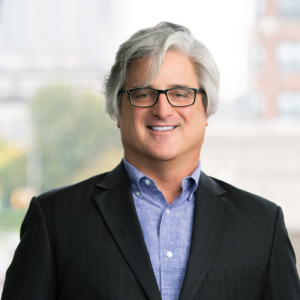The United States Court of Appeals for the First Circuit issued an opinion creating a national divide on when a relator is an “original source” of an FCA claim, finding that a relator’s secondhand knowledge of fraud was “direct” knowledge.
Facts of the Case
In United States ex rel. Banigan v. PharMerica, Inc.[1], a former employee of drug manufacturer Organon, James Banigan, alleged that PharMerica, Inc. one of the largest long-term care pharmacy companies in the United States, accepted illegal kickbacks from Organon in exchange for having Medicaid patients switched from their originally prescribed antidepressants to Organon’s antidepressant Remeron.
Banigan had worked in the same department as two Organon executives who conceived the scheme. Though he was not directly involved in the transactions, Banigan received emails about them, and both executives had spoken to him directly about their plot to induce prescription switches through heavy discounting and cost-saving opportunities.
The Court found that Banigan’s lawsuit, filed in 2007, stated claims that were “substantially similar” to those alleged by a New Orleans based long-term care physician in a settled 2002 lawsuit against PharMerica. Consequently, Banigan was barred from bringing suit, unless he was an “original source” of the information.
Notably, the district court previously held that Banigan’s claims were not subject to the first-to-file bar, which is designed to prevent duplicative qui tam actions where the government has already learned of the alleged fraud from a previously filed action.[2] Applying the Supreme Court’s holding in Kellogg Brown & Root Servs., Inc. v. U.S. ex rel. Carter[3]—that the bar applied only where the first suit was still “pending”—the district court held that because the 2002 lawsuit was settled and dismissed, Banigan’s 2007 suit could proceed.[4]
The Public Disclosure Bar and the Original Source Exception
The public disclosure bar is designed to prevent opportunistic relators, enticed by the financial incentives that the FCA provides, from bringing “parasitic qui tam actions,”[5] that is, suits that are “based upon a prior, public disclosure of fraud” in a civil proceeding.[6] A lawsuit is “based upon” a public disclosure if the relator’s allegations are “substantially similar to” the information already in the public domain and “ultimately target the same fraudulent scheme.”[7]
Prior to 2010, the public disclosure bar no longer applied when “the person bringing the action is an original source” who has “direct and independent knowledge of the information on which the allegations are based.” (Emphasis added).[8] The 2010 amendments to the FCA, which post-date the allegations in this case, removed the word “direct” from the original source exception. The Judiciary Committee’s report on the 2010 amendments reflected frustration with courts interpreting the term too narrowly, creating a chilling effect on potential relators and leading to the dismissal of meritorious cases.[9]
With the benefit of this hindsight, the First Circuit departed from its sister circuits’ narrow construction of “direct” knowledge,[10] finding that Banigan’s secondhand knowledge of the fraud, learned from the executives who concocted the scheme, was sufficient to meet the original source exception. The Court specifically criticized[11] the Eleventh Circuit’s holding in United States ex rel. Saldivar v. Fresenius Med. Care Holdings, Inc., that an employed technician was not an original source because his “firsthand knowledge related to inventory and administration of [medications], not costs and billing[.]”[12] Echoing the Judiciary Committee’s concerns, the First Circuit found that such a narrow interpretation of direct knowledge was “incompatible with a core purpose of the FCA — to incentivize disclosures of fraudulent activity underlying claims for reimbursement from the government.”[13]
Practical Takeaways
- Though this decision interprets the term “direct” in the pre-2010 language of the original source exception to the public disclosure bar, relators with only secondhand knowledge of their alleged fraud may nevertheless assert it as persuasive authority for courts interpreting the relaxed knowledge requirement under the current language.
- The First Circuit’s broad interpretation of the term “direct” may also influence other circuits who have not already construed the term in cases where the pre-2010 language still applies.
- This case further serves as a harsh reminder of the effect of the Supreme Court’s decision in Kellogg,[14] which interpreted the first-to-file rule narrowly. Where a second relator revives previously litigated claims, the Kellogg Court offered defendants cold comfort in the form of ‘issue preclusion,’ applicable only if the first action was decided on the merits rather than the relative norm of settlement, as occurred in this case.
If you have any questions, please contact:
- David Honig at (317) 977-1447 or dhonig@wp.hallrender.com;
- Heather Mogden at (414) 721-0457 or hmogden@wp.hallrender.com;
- Saniya Khare at (248) 457-7852 or skhare@wp.hallrender.com; or
- Your regular Hall Render attorney.
[1] No. 18-1487, 2020 WL 813258, at *3 (1st Cir. Feb. 19, 2020).
[2] Id. at *6, n.8.
[3] 575 U.S. 650, 135 S. Ct. 1970, 1978 (2015).
[4] Banigan, 2020 WL 813258, at *6, n.8.
[5] Id. at *2 (quoting U.S. ex rel. Poteet v. Bahler Med., Inc., 619 F.3d 104, 107 (1st Cir. 2010)).
[6]Id. (citing 31 U.S.C. § 3730(e)(4)(A)).
[7] Id. at *7 (alteration accepted) (citing Poteet, 619 F.3d at 115).
[8] Id. at *2 (quoting 31 U.S.C. § 3730(e)(4)(A)-(B) (2009)).
[9] Id. at *9, n.16.
[10] Id. at *9, n.15 (citing Third and Eight Circuit decisions).
[11] Id. at *9.
[12] Saldivar, 841 F.3d 927, 935 (11th Cir. 2016).
[13] Banigan, 2020 WL 813258, at *9 (citing S. Rep. No. 99-345, at 23-24 (1986), as reprinted in 1986 U.S.C.C.A.N. 5266, 5288-89).
[14] 575 U.S. 650 (2015).


